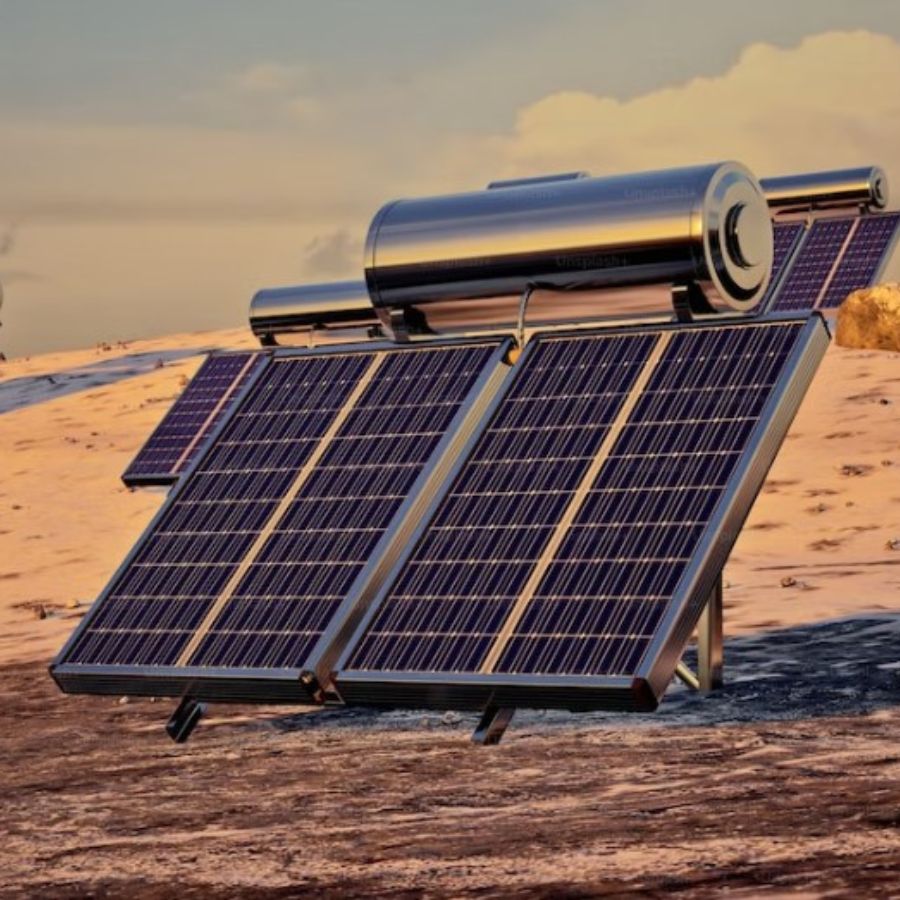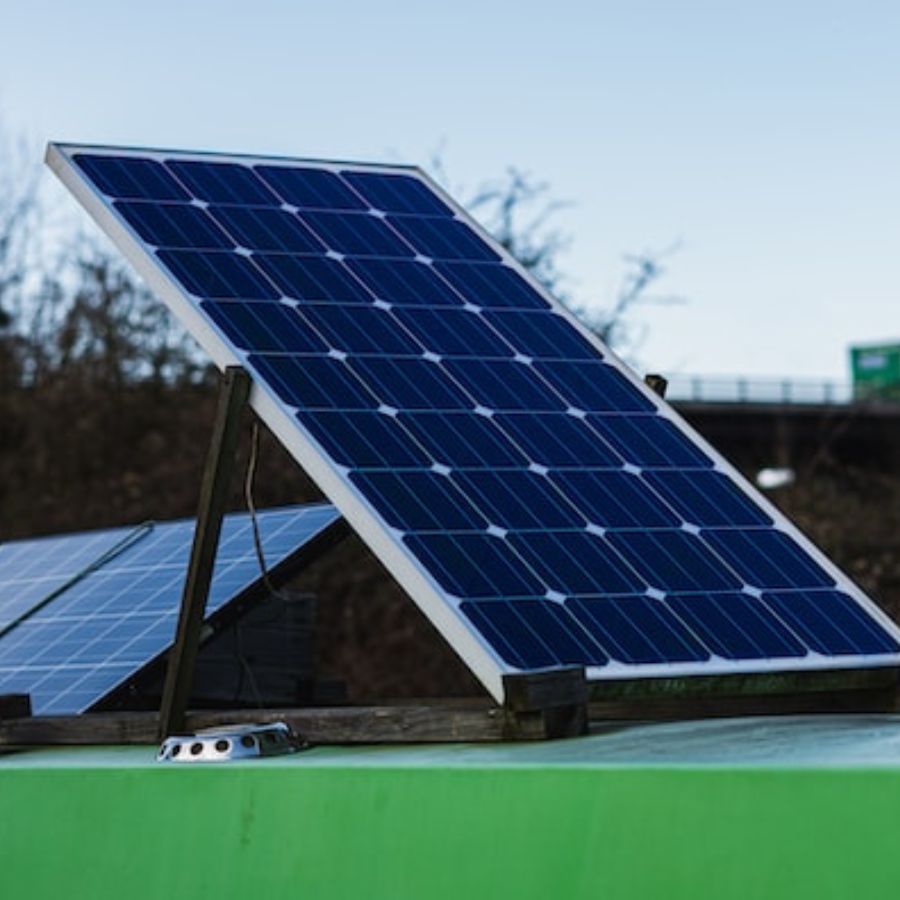Solar panels have become a popular and viable renewable energy source. Solar panels can convert sunlight into electricity by harnessing the power of the sun’s rays, making them an environmentally friendly alternative to traditional fossil fuels. One of the key metrics used to evaluate the efficiency and effectiveness of solar panels is the watts per square meter (W/m²) measurement.
In this comprehensive guide, we’ll delve into the intricacies of watts per square meter for solar panels, exploring what they are, how they work, and why they matter in solar power generation.
Understanding Solar Panels
Solar panels (photovoltaic panels) are devices designed to capture sunlight and convert it into usable electricity.
These panels consist of multiple solar cells with semiconductor materials like silicon. When sunlight strikes these cells, it excites the electrons within the material, generating an electric current.
How Do Solar Panels Produce Electricity?
Solar panels produce electricity through the photovoltaic effect. This process involves the following steps:
1. Absorption of Photons: When sunlight composed of photons hits the surface of the solar panel, the photons get into the solar cells.
2. Generation of Electric Current: The absorbed photons transfer their energy to electrons within the semiconductor material. The electrons get stimulation from this energy, leading them to be in motion and produce an electric current.
3. Collection of Current: The electric current produced by the excited electrons is collected and channeled through the wiring of the solar panel.
4. Conversion to Usable Electricity: The collected electric current from direct current (DC) changes to alternating current (AC) using an inverter. AC is the form of electricity used in most households and businesses.
The Significance of Watts Per Square Meter

Watts per square meter (W/m²) is the power density of sunlight falling on a given area of solar panels.
In the context of solar panels, it refers to the amount of electrical power a solar panel can generate per unit of surface area exposed to sunlight.
This measurement for solar panels is a crucial factor in determining the solar panel efficiency and performance of solar panels.
Calculating Solar Panel Output with Watts Per Square Meter
The formula to calculate the solar panel output and how much energy solar panels produce (in watts) using watts per square meter is as follows:
Solar Panel Output (W) = Watts per Square Meter (W/m²) × Area of Solar Panel (m²)
For instance, if a solar panel has an area of 1.5 square meters and it gets exposed to sunlight with an intensity of 1000 W/m², its potential output can be calculated as:
Solar Panel Output = 1000 W/m² × 1.5 m² = 1500 watts
Why Watts Per Square Meter Matter
Watts per square meter are a critical metric for several reasons:
1. Efficiency Comparison: Comparing the W/m² among different solar panels allows consumers to assess the efficiency of various models.
Panels with higher W/m² values are generally more efficient at converting sunlight into electricity.
2. Space Utilization: Understanding the watts per square meter helps determine how much energy one can generate from a specific area.
It is vital in situations where space for solar panel installation is limited.
3. System Sizing: When planning to install solar panels, knowing the watts per square meter can aid in determining how many solar panels are needed to meet desired energy output goals.
Factors Affecting Watts Per Square Meter
Various factors that dictate how effectively they can convert sunlight into usable electricity influence solar panels’ efficiency and power output. They are often in watts per square meter (W/m²)
Understanding these factors is essential for optimizing the performance of solar panels and accurately estimating the energy production of a solar panel system.
Solar Cell Efficiency
The efficiency of the solar cells within a panel is a fundamental factor affecting the W/m² measurement.
Solar cell efficiency refers to how well the cells can convert sunlight into electricity. Higher-efficiency solar cells can generate more power for a given surface area, resulting in higher watts per square meter value.
Again, it is crucial for installations where space is limited, such as residential rooftops or urban environments.
Sunlight Intensity (Solar Irradiance)
Sunlight intensity (solar irradiance) is a crucial determinant of the power output of solar panels. Solar irradiance measures the amount of sunlight energy that strikes a specific area over time, usually expressed in watts per square meter (W/m²).
The higher the solar irradiance, the more energy the solar panels can generate. Factors influencing solar irradiance include:
Geographic Location: Different regions receive varying levels of sunlight due to factors like latitude, altitude, and climate.
Time of Day and Season: Sunlight intensity changes throughout the day and varies with the seasons. Panels receive the highest irradiance when the sun is directly overhead.
Atmospheric Conditions: Cloud cover, air pollution, and atmospheric moisture can attenuate sunlight, reducing solar irradiance.
The Angle of Incidence
The angle at which sunlight strikes a solar panel (angle of incidence) determines the watts per square meter.
Solar panels are most efficient when the angle of incidence is perpendicular to the panel’s surface.
As the angle deviates from this optimal position, effective solar irradiance reduces leading to a decrease in power output.
Environmental Factors
Environmental conditions can impact the efficiency of solar panels and subsequently affect the watts per square meter measurement.
Factors like weather conditions, air quality, and temperature can influence the amount of sunlight reaching the solar panels:
Weather Conditions: Cloudy days or overcast skies reduce the sunlight available for solar panels, leading to a decrease in power output.
However, even on cloudy days, a solar panel produces some power, albeit at a lower rate.
Air Quality: Airborne particles, such as dust, dirt, and pollutants, can accumulate on the surface of solar panels, reducing their efficiency by blocking sunlight.
Regular cleaning and maintenance can mitigate this issue.
Temperature: Solar panels are sensitive to temperature changes. High temperatures can cause a decrease in solar cell efficiency, affecting the overall power output.
However, modern solar panels can handle a range of temperatures and still perform efficiently.
Several interconnected factors influence the watts per square meter measurement of solar panels, ultimately determining their efficiency and power output.
Understanding these factors is crucial for individuals and businesses looking to harness the full potential of solar power.
Solar panel installations can be optimized to generate more energy by considering variables such as:
- solar cell efficiency
- sunlight intensity
- The angle of incidence
- environmental conditions
They contribute significantly to the shift toward sustainable energy sources.
As the world continues to embrace solar power as a clean and renewable energy solution, a comprehensive understanding of these factors will play a pivotal role in realizing the benefits of solar technology.
Maximizing Watts Per Square Meter Solar Panels
To get the most out of your solar panel system in terms of watts per square meter, consider the following tips:
1. Optimal Placement: Install solar panels in locations where they can receive maximum sunlight throughout the day.
Besides, it often involves placing panels on rooftops facing south in the Northern Hemisphere and north in the Southern Hemisphere.
2. Regular Maintenance: Keep solar panels clean and free from debris to ensure they receive the maximum available sunlight. Dust, dirt, and leaves can reduce the watts per square meter.
3. Tracking Systems: Consider using solar tracking systems that adjust the angle of the panels throughout the day to face the sun directly. These systems can significantly improve energy production by maximizing the watts per square meter.
Domestic Solar Panel Systems and Watts Per Square Meter
Determining System Size
When planning to get solar panels installed on a residential property, understanding watts per square meter is vital for determining the system size needed to meet energy requirements.
Homeowners can estimate the number of panels required by evaluating the average sunlight intensity in the area and the available roof space.
Roof Space Utilization
Roof space availability is often a limiting factor for residential solar panel installations. Therefore, selecting panels with higher watts per square meter value can help generate more energy from the available space, maximizing the benefits of the system.
Energy Independence
Domestic solar panel systems offer homeowners a pathway to energy independence by harnessing the power of the sun. The watts per square meter measurement guides homeowners in selecting panels that can generate sufficient energy to meet their household needs.
Conclusion
Solar panels are a remarkable technology that harnesses the sun’s energy to produce electricity. The watts per square meter metric plays a crucial role in determining the efficiency, output, and overall effectiveness of solar panels.
As renewable energy becomes increasingly important in combating climate change and reducing reliance on fossil fuels, understanding watts per square meter empowers individuals and businesses to make informed decisions about solar panel installations.
By optimizing the watts per square meter, we can harness the full potential of solar power and pave the way for a cleaner and more sustainable future.
Frequently Asked Questions
How Many Watts Does 1 Square Foot of Solar Panel Produce?
The power output of a solar panel depends on various factors, including its efficiency, the intensity of sunlight, and environmental conditions. On average, a standard solar panel with an area of 1 square foot can produce around 10-20 watts of power.
However, the actual output can vary based on the specific characteristics of the solar panel and the location where it’s installed. More efficient solar panels or those exposed to higher levels of sunlight can produce closer to the upper end of this range.
How Many Kwh of Solar Energy per Square Meter?
The amount of solar energy produced in Kilowatt hours per square meter (kWh/m²) depends on the solar irradiance, which is the intensity of sunlight falling on a specific area. On a clear day with high solar irradiance, a square meter of efficient solar panels can generate around 150-250 watt-hours (Wh) of energy in an hour.
It translates to approximately 1.5-2.5 kWh per day. Remember that this is a rough estimate and can vary based on factors such as panel efficiency, geographic location, and weather conditions.
In regions with abundant sunlight and efficient solar panels, the daily energy production per square meter can be closer to the upper end of this range. On the other hand, areas with less sunlight or less efficient panels might yield energy production closer to the lower end.

